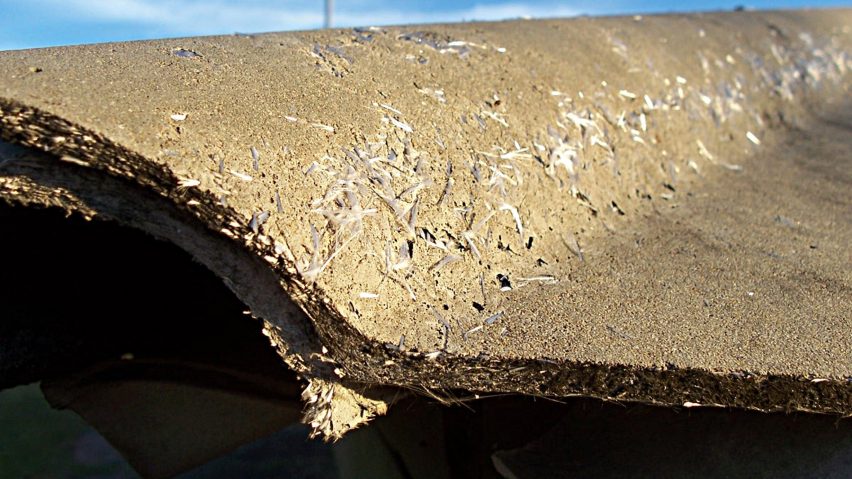
AIA demands "blanket ban" on asbestos following new EPA regulation
The American Institute of Architects has denounced a US government proposal that could allow the manufacture of new asbestos products, following a significant backlash from the architecture community at-large.
Although not yet passed, the Significant New Use Rule (SNUR) from the United States Environmental Protection Agency (EPA) proposes asbestos be re-introduced into the market through new products, which can be made in the country or imported.
Under the rule, companies would first need to petition its use and seek approval from the federal government before they could begin manufacturing.
The American Institute of Architects (AIA) has issued a statement in strong opposition to the EPA's proposal after pressure mounted on the organisation to react – via its members on social media.
The EPA should prohibit all asbestos, claims AIA
"The AIA opposes this goal, even if on a case by case basis, and feels the EPA should use their existing regulatory authority to establish a blanket ban on the use of asbestos," said the letter.
The SNUR was released on 11 June 2018, but it has taken two months for knowledge of the proposal to proliferate. News articles about the topic emerged earlier this week, causing many architects and construction-related organisations to take to Twitter in objection.
Several called for the AIA to issue an official response, so president Carl Elefante released a statement and senior vice president of advocacy and relationships Sarah Dodge wrote an open letter to voice their opinions.
"Either by existing authority or through a significant new use rule, the EPA should review and eliminate the use of asbestos in domestic or imported materials," said AIA's letter by Dodge.
Past bans and regulations prove not enough
Asbestos is made from a set of naturally occurring silicate minerals and was commonly used as a construction material in American houses built before the 1980s – particularly as floor tiles, ceiling tiles, roof shingles, siding and insulation.
However, the material was proved to cause severe health risks for construction workers and others who come into contact with it. Once asbestos fibres enter the lungs, they are unable to be removed, resulting in cases of lung cancer, mesothelioma, tumours and other diseases.
In 1989, the EPA banned most asbestos-containing products but the regulation was overturned in 1991 by the Fifth Circuit Court of Appeals in New Orleans. As a result, the 1989 regulation only banned new asbestos-articles to be made, as well as prohibiting flooring felt, roll board, and corrugated, commercial, or speciality paper containing asbestos.
A handful of products in the US still contain asbestos, including heavy machinery, brake pads, automobile clutches, roofing materials, vinyl tile, cement piping, corrugated sheeting, and home insulation.
Varying asbestos products could enter US market
Products can be made in the US with up to one per cent of asbestos, while those comprising a higher percentage can be imported, often from China and Russia. The SNUR would potentially allow for products with a higher percentage.
"The EPA has offered no compelling reason for considering new products using asbestos, especially when the consequences are well known and have tragically affected the lives of so many people," said Elefante.
"The EPA should be doing everything possible to curtail asbestos in the United States and beyond – not providing new pathways that expose the public to its dangers."
The AIA was called upon to denounce the EPA's proposal as asbestos is so common in demolition and renovation projects, as well as working with heavy machinery. The organisation represents architects and others in construction-related industries, so is seen to bear responsibility over such issues.
Severe health risks inform AIA's decision
"The handling of asbestos, lead, mercury, PCBs, silica and even mould during any construction project is not construction work – it is hazardous materials work, with completely different liability issues," said Dodge.
"Given the established health, safety and welfare risks that asbestos poses at all stages of its mining and usage, the AIA urges asbestos to be treated as a high priority chemical that is phased out of usage," Dodge added.
Other reputable architecture associations in the US, like DOCOMOMO and the National Trust of Historic Preservation, are yet to release statements on the asbestos proposal.
Since the SNUR was published, almost 2,000 people have submitted comments on a portal managed by the US government, where the AIA also posted its letter by Dodge – directed to Andrew Wheeler, acting administrator of the EPA.
The comment portal is open until 11:59pm on 10 August 2018, after which the agency will review all comments and further evaluate the toxins up for review as part of the Toxic Substances Control Act (TSCA).
Final details of their deliberations and the outcome will be released in December 2019.
Photography is by Bill Bradley, Wikipedia.